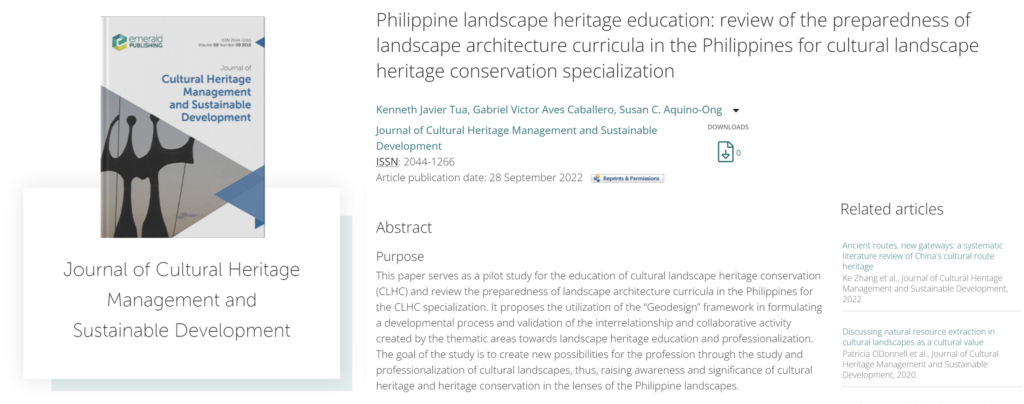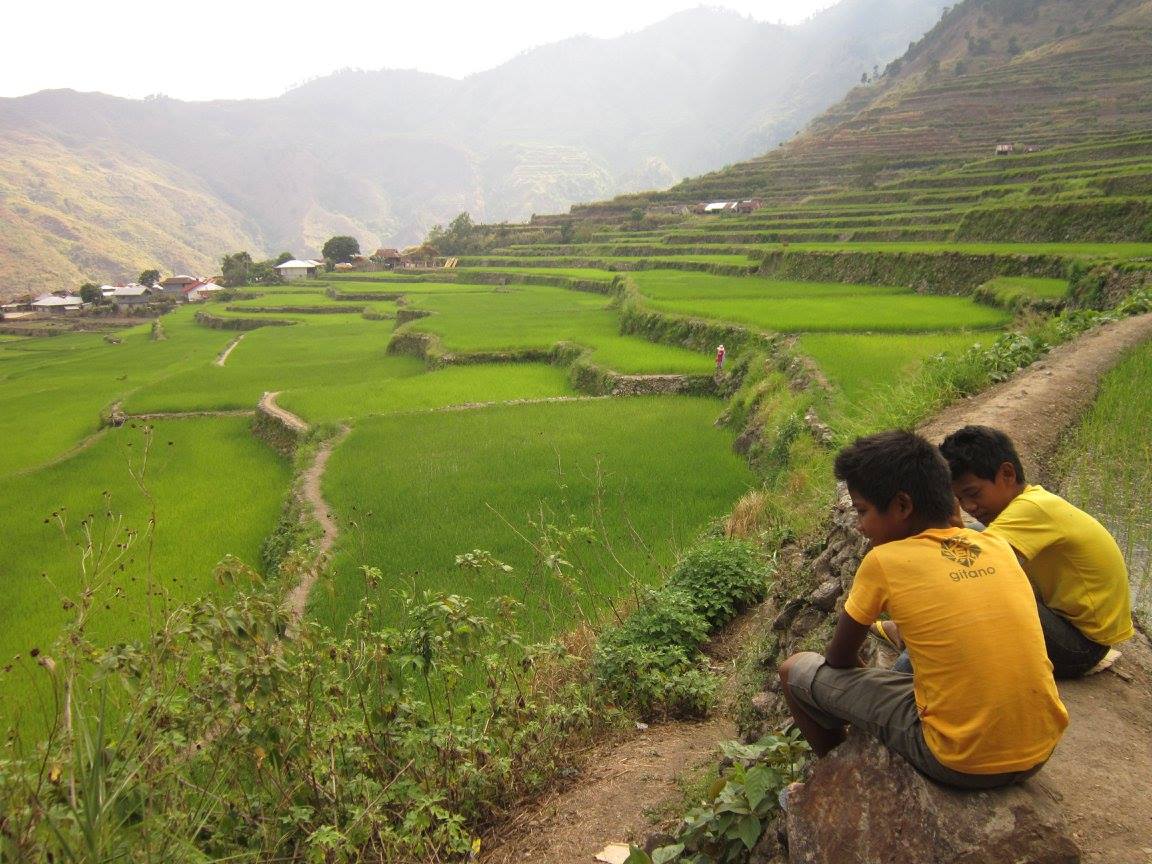Are we prepared to be teaching landscape heritage conservation? We have many cultural landscapes that need to be preserved, but few formally trained practitioners.
The Journal of Cultural Heritage Management and Sustainable Development published the research on the Cultural Landscape Heritage Conservation (CLHC) specialization in the Philippines. The study by ICOMOS Philippines’ members Arch. Kenneth J. Tua together with fellow Cultural Landscape specialists LArch. Gabriel Caballero and LArch. Susan C. Aquino-Ong was in coordination with the current four universities offering landscape architecture in the country: the University of the Philippines – Diliman, University of San Carlos, Bulacan State University, and University of San Agustin. Relevant stakeholders were also consulted in the study, such as the Philippine Association of Landscape Architects (PALA), the Technical Committee for Landscape Architecture, Commission on Higher Education (TCLA-CHED), and the Professional Regulation Commission – Board of Landscape Architecture (PRC BOLA).
The peer-reviewed article reviews the preparedness of the Landscape Architecture curricula in the Philippines for the CLHC specialization and will serve as a starting point to engage discussions with the PRC BOLA in its development of the CLHC specialization currently being planned. The end goal is to develop a training program for landscape architecture students from the current four universities, and landscape architects and heritage professionals.
It utilizes the framework of Harvard professor emeritus Carl Steinitz’s ‘Geodesign’, in formulating a developmental process and validation of the interrelationship and collaborative activity of the identified thematic areas and courses in terms of IT, geographic sciences, design professions and the people of the place.
If a program is created, then the hope is that more technically proficient practitioners can create methodologies and policies to preserve and protect places of cultural and natural significance.
The work has been presented initially at the NAMI: 2021 PALA National Convention, and has been uploaded as open source here: https://openarchive.icomos.org/id/eprint/2539/ . The published and peer-reviewed version is available in this DOI: https://doi.org/10.1108/JCHMSD-11-2021-0194 .
ICOMOS Philippines congratulates the work of Arch. Tua, LArch. Caballero and LArch. Aquino-Ong for this significant publication!

For more information on ICOMOS Philippines ➡️ https://philippines.icomos.org/
#ICOMOS #ICOMOSPH #LandscapeHeritage #Conservation #SustainableDevelopmentGoals #LikasKayangPagUnlad #PhilippineHeritage #PAMANA2030






